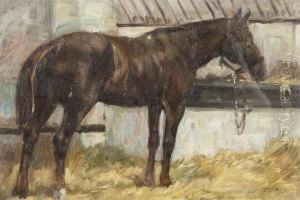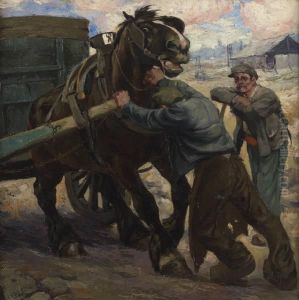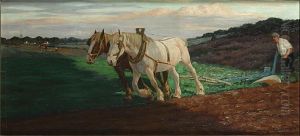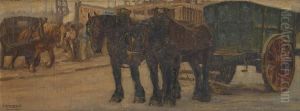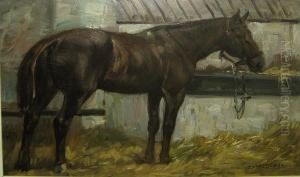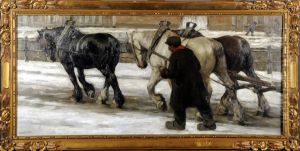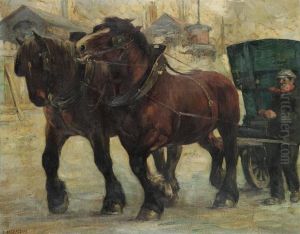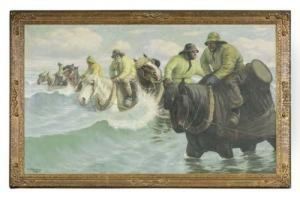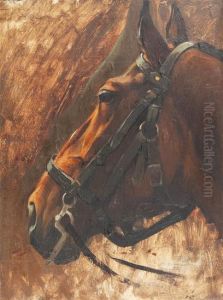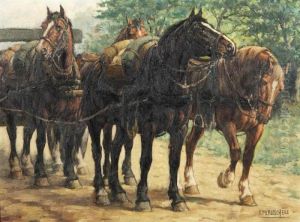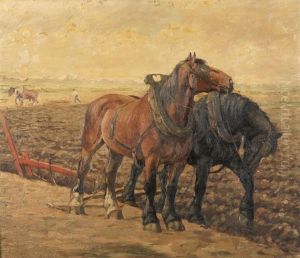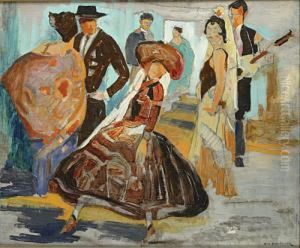Constant De Busschere Paintings
Constant De Busschere was a Belgian artist born in 1836 in Kortrijk, Belgium. He is primarily known for his work as a painter, but he was also proficient in drawing and occasionally engaged in printmaking. De Busschere's artistic journey began at a young age, influenced by the rich cultural heritage of his homeland and the burgeoning European art movements of the 19th century.
He pursued his art education in Belgium, where he was exposed to various styles and techniques that shaped his early career. De Busschere was particularly drawn to the Realist movement, which emphasized the depiction of everyday life and the natural world with truth and accuracy. This influence is evident in his extensive body of work, which includes landscapes, portraits, and genre scenes that capture the essence of Belgian life and scenery with a remarkable attention to detail.
Throughout his career, De Busschere exhibited his work in various salons and galleries, gaining recognition and accolades for his artistic talent. His paintings often feature a soft, naturalistic color palette and a masterful handling of light and shadow, qualities that lend his works a timeless appeal. Despite the changing artistic trends of his time, De Busschere remained committed to his realistic approach, finding beauty in the simplicity and authenticity of his subjects.
In addition to his painting, De Busschere was dedicated to promoting art and culture in his community. He was involved in several artistic societies and contributed to the cultural life of Kortrijk and the wider Belgian art scene. His commitment to art extended beyond his own practice, as he mentored young artists and participated in initiatives to support the arts.
Constant De Busschere passed away in 1911, leaving behind a rich legacy that continues to be appreciated by art historians and collectors. His work is represented in various museums and private collections, where it serves as a testament to his skill and vision as an artist. Through his paintings, De Busschere captured the spirit of his time, offering future generations a window into 19th-century Belgian life and the enduring beauty of its landscape and people.
